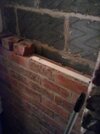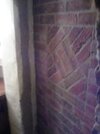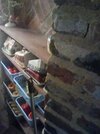- Joined
- 2 Dec 2004
- Messages
- 560
- Reaction score
- 4
- Country

Thanks for the reply.
They wouldn't have had pre manufactured hydrated lime powder in the 30s, so they likely would have slaked their own lime.
So if you actually want to match the existing mortar mix, is it hydraulic lime or hydrated lime you want to use? Would they have had hydraulic lime in the 30s? If not, then all the advice recommending nhl3.5 is wrong?
Also you briefly touch on sand in your post. The mortar in my house does appear to based on sharp sand, from what I can tell. Now I used building sand to repoint as obviously that is the sand you use with a standard cement mortar. If you use full on lime with no cement, you're meant to use sharp sand with it, not building sand. If you try using sharp sand it is more difficult to work with though is that correct? So which sand is recommended?
They wouldn't have had pre manufactured hydrated lime powder in the 30s, so they likely would have slaked their own lime.
So if you actually want to match the existing mortar mix, is it hydraulic lime or hydrated lime you want to use? Would they have had hydraulic lime in the 30s? If not, then all the advice recommending nhl3.5 is wrong?
Also you briefly touch on sand in your post. The mortar in my house does appear to based on sharp sand, from what I can tell. Now I used building sand to repoint as obviously that is the sand you use with a standard cement mortar. If you use full on lime with no cement, you're meant to use sharp sand with it, not building sand. If you try using sharp sand it is more difficult to work with though is that correct? So which sand is recommended?
Last edited:



